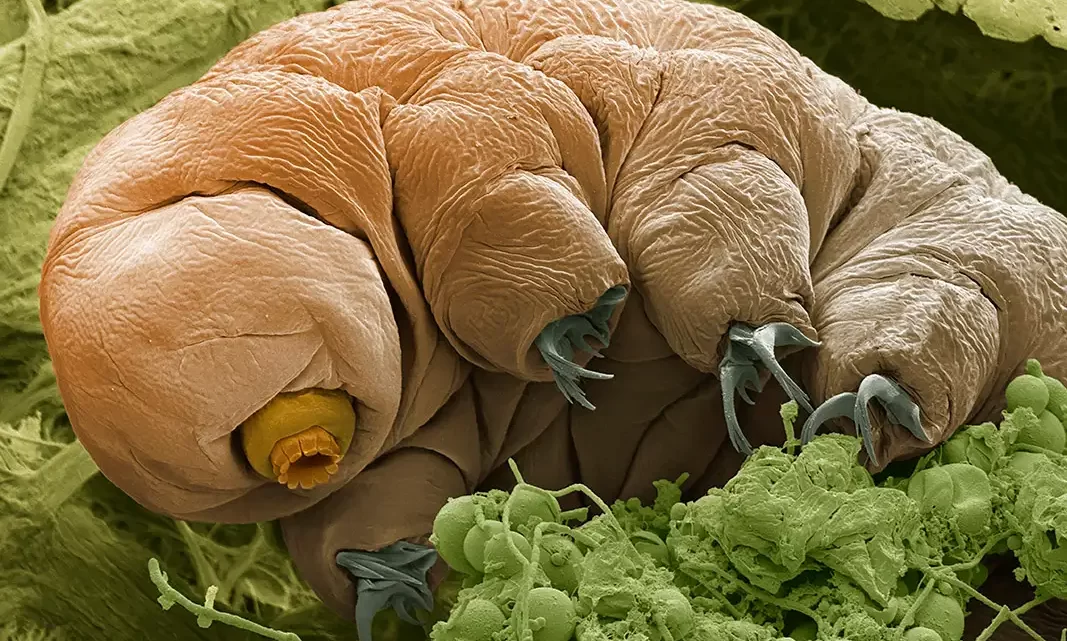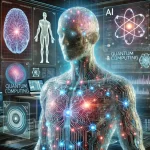
Decoding Tardigrade Superpowers: Ancient Transition Revealed in Evolutionary Tale of Resilience
February 5, 2024 Off By adminIn a scientific quest to unravel the mysteries behind the remarkable survival skills of tardigrades, researchers have delved into the complex evolutionary history of these microscopic creatures. Tardigrades, also known as ‘water bears’ or ‘moss piglets,’ are renowned for their resilience, surviving extreme conditions such as radiation, freezing, and desiccation.
The study, led by scientists at the University of Florida, sheds light on the intricate history of tardigrades’ adaptation to terrestrial environments. By identifying sequences from six gene families across 13 genera of tardigrades, the researchers constructed the first evolutionary trees for these groups, providing insights into the genes associated with their survival mechanisms.
Tardigrades, existing in diverse environments from deep ocean mud to rainforests, possess the unique ability of anhydrobiosis—a reversible metabolic halt upon almost complete desiccation. This capability is crucial for their resilience in various habitats.
While previous research identified genes linked to anhydrobiosis, this study aimed to uncover the broader evolutionary context of these genes. Surprisingly, the researchers found a complex network of independent gene duplications, challenging the initial expectation of clear groupings around ancient duplications.
The study suggests that tardigrades underwent two separate transitions from marine to terrestrial habitats in their evolutionary history—once in the ancestor of eutardigrades and once among heterotardigrades. This discovery adds layers of complexity to our understanding of tardigrade evolution and challenges simplified hypotheses.
James Fleming, a bioscientist at Keio University, expressed the excitement of uncovering this intricate network of gains and losses in gene duplications, emphasizing the need for further exploration. The researchers acknowledge the limitations of the study due to sparse data from some key tardigrade lineages, emphasizing the importance of ongoing large-scale sequencing initiatives.
As the scientific community continues to decode the secrets of tardigrades, these resilient microorganisms provide a fascinating glimpse into the complexity of evolutionary adaptations, showcasing their incredible journey from marine to terrestrial habitats.
Table of Contents
ToggleRelated posts:
![Bioinformatics Boom: How Infectious Diseases & Global Events Shape the 2023-2027 Forecast]()
Bioinformatics Boom: How Infectious Diseases & Global Events Shape the 2023-2027 Forecast
news![biophysics_bioinformatics]()
Revolutionary Imaging Method Unveils Hidden Brain Structures for Advanced Tumor Diagnosis
news![Organicai]()
Organic AI: The Future of AI Inspired by Biology
A.I![chatgpt]()
Z-DNA Flipons & Disease: How AI is Revolutionizing Genomic Research
news![AI-coding]()
AI Coding Boom Raises Concerns Over Code Quality
news![COVID-19-SARS-CoV-2-deletedsequence.]()
Early COVID-19 symptoms vary by age group, according to new research.
news![cancer-machinelearning-omicstutorials]()
Novel Colon Cancer Biomarker Ku70 Unveils Potential to Deactivate Cancer Cells
news![bioinformatics-fileformat-basics]()
Crispr Gene Editing Shows Promise in Treating Hereditary Swelling Disorder
news![The Genetic Landscape of Magic Mushrooms Paves the Way for Tailored Fungi]()
The Genetic Landscape of "Magic" Mushrooms Paves the Way for Tailored Fungi
news![Genome analysis tools]()
Corn Genome Unveils Multi-Disease Resistance Pathways
news![metagenomics-human flora]()
Gut Microbiome Predicts Severity of Acute Pancreatitis: A Europe-wide Study
news![Computer-vaccine-design-bioinformatics]()
2025's Breakthrough Trends in Bioinformatics: AI, Genomics, and Personalized Medicine Reshaping Heal...
A.I![data scientist collaborates with an AI assistant ChatGPT interface]()
Overview of Free AI Chatbots and GPT Models Available to the Public in 2025
A.I![Top 10 Innovations in Bioinformatics using AI/ML]()
AI Trends Today: The Latest Breakthroughs, Investments, and Ethical Challenges
A.I![Neanderthal-and-Denisovan]()
The Role of Neanderthals in Human Evolution and Survival
news![quantumcomputing-AI]()
Today News: Artificial Intelligence (AI), Quantum Computing, and Robotics
A.I


















